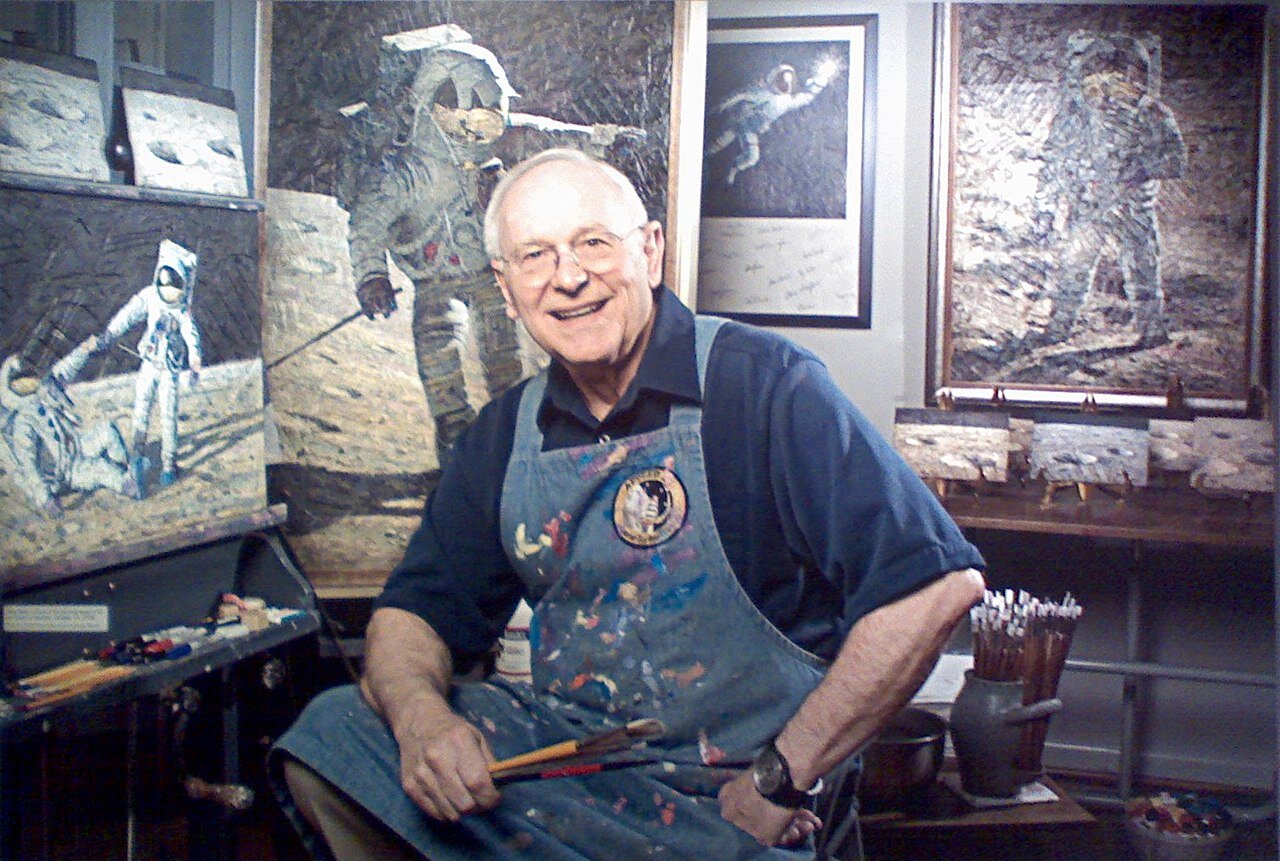Sometimes I’m just stacking the dishwasher, or weeding the garden, and the thought comes to me unbidden. I’ll never get over it. At least I hope I never do.
Charles Conrad and Alan Bean put it there. They were the men on the ground for Apollo 12. Alan was a regular interviewee for NASA’s Unexplained Files. He always talked about what he’d done as if it was normal. He was the fourth human to walk on the moon.
Alan putting in the plutonium, as you do…
When you look at it in context, it’s staggering. In the Apollo 11 mission, Armstrong and Aldrin dug some holes, took samples, planted a flag and took pictures.
OK, what’s next, boss?
Assemble a nuclear reactor, while wearing a space suit.
That right there is your giant leap.
Don’t get me wrong – the Apollo 11 guys were BUSY, and every space mission has to hit insane schedules, but the reactor just seems next level to me.
It was built to power a package of sensors and experiments. With the moon in darkness for 14 days out of 28, solar power wasn’t an option.
This is the SNAP-27 generator they assembled. Technically, I shouldn’t call it ‘a reactor’, because it uses atomic decay (rather than a reaction) to generate heat. It still counts in my book.
And that's not all Charles and Alan had to do. Apollo 12 landed close to Surveyor 3, an unmanned spacecraft that collected the first lunar soil samples. The astronauts had to dismantle it, and bring parts back to earth for analysis.
Surveyor 3 had been on the moon for a couple of years, and the idea was to find out how well the tech stood up to the strains of lunar exposure - extreme temperature variations and radiation. But when scientists analysed the Surveyor 3 camera, they got a surprise.
The landing site for Apollo 12 was chosen to be within walking distance of Surveyor
They found something alive - traces of a bacteria called Streptococcus Mitis. This should be impossible. At the time, it was believed nothing could survive in space, and yet apparently bugs on Surveyor 3's lens lived through two years of lunar radiation. How?
Nobody had ever heard of Tardigrades in 1969, so the very idea of any life in space was a big deal. NASA concluded that the bugs hitched a ride after contaminating the equipment pre-launch, but later studies contradicted this finding. It remains controversial.
Perhaps something happened during Apollo 12’s journey home? Unfortunately, we’ll never know.
The astronauts were supposed to document everything with the first ever colour TV camera taken to the moon, but after just a few minutes of filming, Alan accidentally pointed it at the sun and fried the sensor. He was absolutely frank about how he’d messed up. That’s one of the striking things about astronauts - they don’t really do arse-covering - it’s not a useful activity in space. Thankfully, the mistake didn’t end Alan’s spaceflight career. He went on to fly in Skylab.
This is a still image from Apollo 12’s Hasselblad cameras, but I imagine the moment before Alan fried the TV camera looked something like this.
The scarcity of images from Apollo 12 has made the mission undeservedly obscure. Perhaps that’s why Alan spent his post-NASA years painting what he saw on the moon. This (below) was what he always looked like when we turned up for interviews. The first time we showed up, the director made the mistake of asking him to change into something else, and Alan very politely told him where to get off. Interviews were always on his terms, which takes some getting used to for producers accustomed to controlling what they shoot, but the content he gave us was always gold.
This old guy in a smock built a nuclear reactor on the moon.





